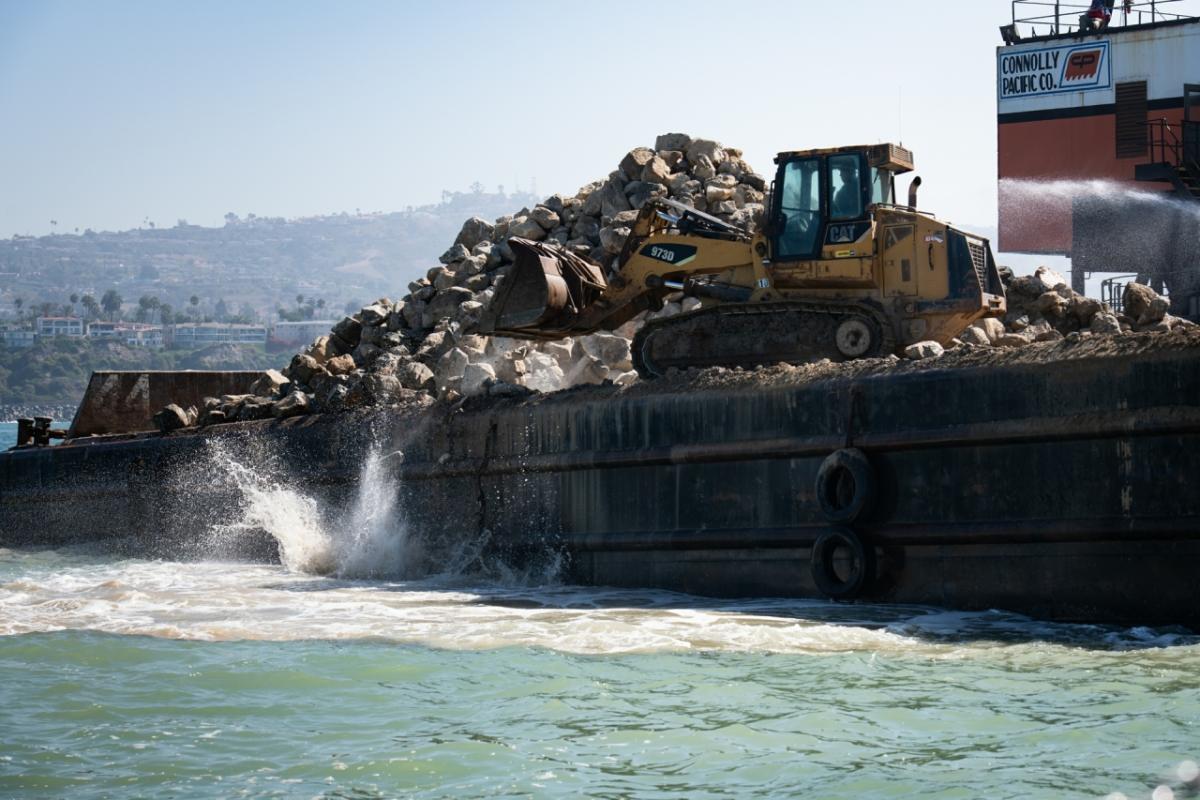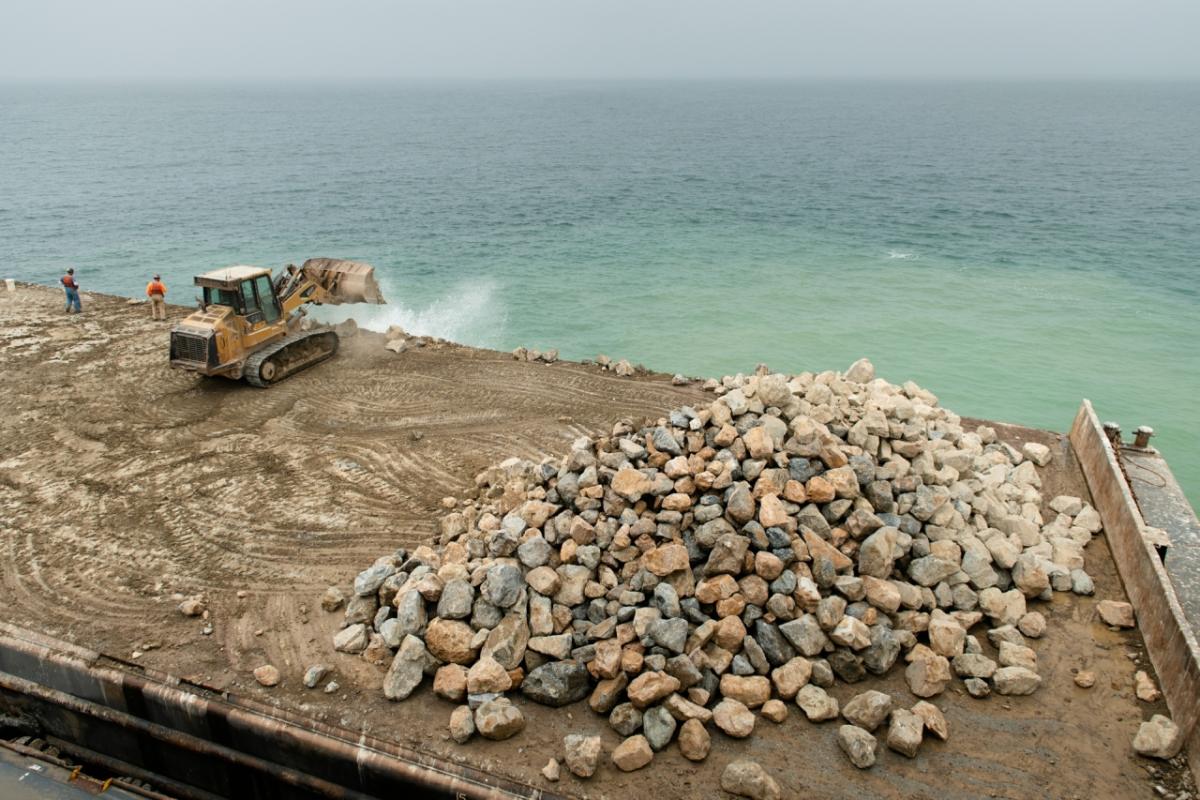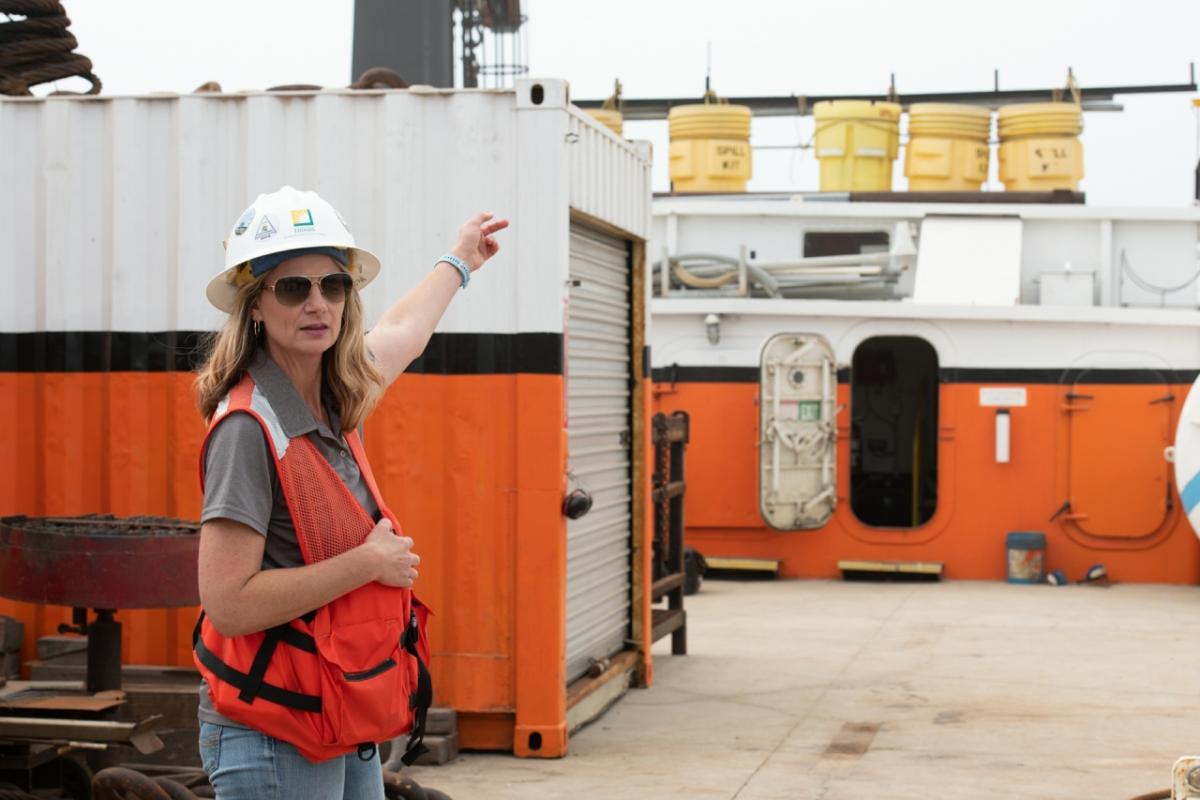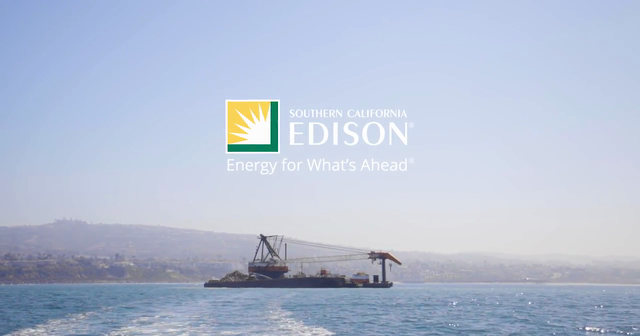Creating a Rain Forest in the Pacific Ocean
SCE’s Wheeler North Reef expansion project will build 374 acres of habitat for residential fish and marine life near San Clemente.
DANA POINT, Calif.—When Jenny McGee goes to work each week on a derrick barge floating about a mile off Dana Point, it not only feels like home, it is home.
Growing up in this beachside community, McGee has a deep connection to the ocean and its living creatures. And as the project manager for Southern California Edison’s Wheeler North Reef expansion project, she is helping to ensure the health of this vital ecosystem.
“The expansion project is like creating a rain forest in the ocean,” said McGee, who is part of SCE’s environmental services team.
The original Wheeler North Reef was built in 2008 as a mitigation effort related to the San Onofre Nuclear Generating Station to help increase the number of residential fish in the area. Today, the reef covers 174.5 acres and supports an average of about 14 tons of residential fish. That, however, is short of the 28 tons per year set by the California Coastal Commission, the governmental body overseeing the mitigation project.
“The reef is doing extremely well, but it is not large enough to attract enough residential fish,” said McGee. “The purpose of the remediation of the reef is to expand and meet those numbers.”
SCE started the permitting and pre-construction process for the expansion in January 2018. The physical work to expand the reef began in July. Once completed, the reef will more than double to 374 acres.
McGee takes a crew boat out to the stationary barge each week to oversee the reef expansion. She joins a diverse team that includes an oceanographer, marine biologists and engineers. A contract crew on the derrick barge uses a large crane to pick up and drop organic quarry rocks into 38 feet of water. GPS is used to determine where the polygons are placed, helping to determine the exact location the rocks, each about 3 feet in diameter, will be placed.
“It’s like placing Legos,” she said.
A rock barge sits close by with a ready supply of about 4,000 tons of quarry rock. Rocks will continue to be dropped six days a week until the end of this month before a short break. Work will resume next spring.
The rocks provide an anchor for the kelp to bond to and grow, sometimes up to 2 feet a day. The reef attracts sea life, including several types of fish such as sheepshead, bass and black seabass. Lobsters and urchins also make their homes here. As the kelp grows, sometimes part of it will break off, especially during storms, forming kelp patties. These are used as temporary resting spots by other animals such as seals and sea lions.
Biologists help monitor the area for marine animals and if any are spotted nearby, the work on the barge stops.
“The reef is like a rain forest, supporting a large diversity of species. It also provides different ecosystem functions like food, habitat and protection,” said McGee.
Each year, divers from an independent scientific research team check on and measure the growth of the reef and the number of residential fish. This data is then compiled to measure progress and ensure the project is meeting compliance goals.
The manmade Wheeler North Reef will have ecological benefits long after the project is completed next September. Most reefs that are formed using man-made structures such as a sunken ship eventually disintegrate. This reef’s organic quarry rocks will not.
“This is truly a passion project,” said McGee. “I fell in love with the science of recovering habitats a long time ago. It is humbling to be part of returning ecological systems.”





